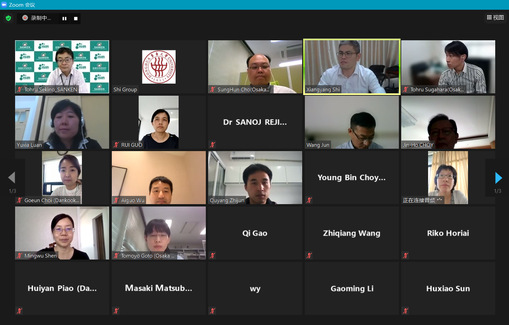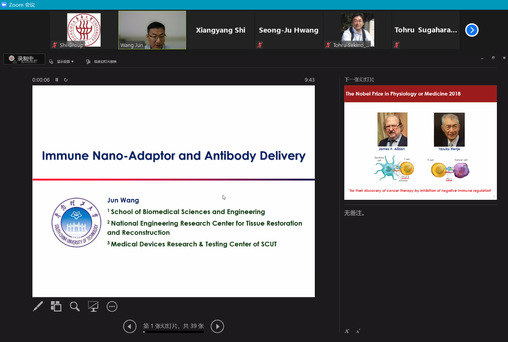
From October 13 to 14, the 5th A3 foresight Symposium on organic / organic nanohybrid platforms for precision tumor imaging and therapy was successfully held on zoom conference platform. The seminar was hosted by our university, undertaken by the school of chemistry, chemical engineering and Bioengineering, the State Key Laboratory of fiber material modification and Shanghai biophysics society, and Professor Shi Xiangyang, vice president of the school of chemistry, chemical engineering and Bioengineering, served as the chairman of the meeting. The theme of the seminar was construction of organic / inorganic nano hybrid platform and accurate tumor imaging and treatment. During the conference, nearly 100 professors, scholars and graduate students from Chinese, Japanese and Korean universities attended the seminar and exchanged the latest academic progress online.

(online conference)
The opening ceremony of the conference was presided over by Professor Shi Xiangyang. A total of 27 professors or researchers from Donghua University, Fudan University, Chinese Academy of Sciences, South China University of technology, Yonsei University of Korea, Korea Institute of advanced science and technology, Seoul National University, Tokyo University of technology, Osaka University, Northeastern University and other well-known universities at home and abroad made wonderful reports on the construction of organic / inorganic nano hybrid platform and its accurate tumor imaging and treatment. In addition, during the meeting, graduate students from universities in China, Japan and South Korea made oral reports and summarized their scientific research progress.
After the meeting, a number of Chinese and foreign experts also held online discussions, pointing out the follow-up research direction and cooperation possibilities. The seminar provided a platform for domestic and foreign researchers in relevant fields to exchange the latest scientific research progress, enhanced the international scientific and technological cooperation among universities in China, Japan and South Korea, and promoted the establishment of substantive cooperation among experts and scholars from various countries, which was highly praised by the participating experts.

(Professor Wang Jun from South China University of technology gives an academic report)

|
|